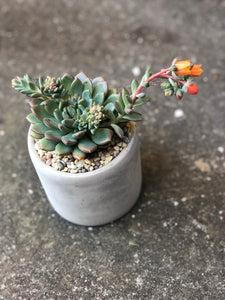Simple Succulents
Plants that have evolved and adapted to their natural surroundings are known as succulents. Rainfall is seasonal in various regions of the earth, thus plants must store water in their tissues to meet their needs. Succulents have done so, albeit there are always exceptions to the rule. Agaves and Yuccas are both classified as succulents, however, they differ in that their leaves do not appear to hold water, even though they are drought-tolerant plants.
Succulent plants thrive indoors, but they also thrive in a warm place in the yard or a rockery. Succulents have unremarkable flowers since they are kept for their intriguing foliage and capacity to withstand more abuse than other the more demanding houseplants. Because these plants thrive in a sunny atmosphere in their natural habitat, a well-lit, sunny location is essential to growing them successfully indoors. Each day, rotate the plants so that each side receives some sunlight. This keeps the plant from getting deformed by growing in one direction.
Succulents are heat-loving plants that thrive in our climate, but they do prefer lower temperatures in the winter.
This closely resembles the climate in which they originated. Take houseplants outside on warm days throughout the year. If rain is forecasted, bring vulnerable plants with delicate leaves indoors to avoid potential rain damage.
If you choose to leave them outside, translucent covers, whether plastic or glass, provide weather protection.
These plants' innate water-storing qualities make them easy to care for but keep in mind their natural environment. During the rainy season, they grow; after the rain, they rest and receive little water, but they do get some. So keep this in mind when watering your plants. Watering enough to keep the container from drying out during the growing season but not so much as to damage the roots during the rest period! Water plants with delicate foliage from the base tray; keep the pot in place long enough for the water to reach the potting mix's top. If you don't have the time, get a watering container with a narrow spout.
Fertilize these plants every 6-8 weeks, but don't overfeed them or they'll become top-heavy and weak. Some plants do not require nourishment. You are free to make your own decisions about their criteria.
Most succulents will only need to be repotted once a year into a larger pot, and others can be left for up to two years. The best moment is when the plant is about to enter its active growth season. If you're using regular potting soil, mix in some coarse sand or perlite. Two parts potting mix to one part sandy mixture is recommended.
For more info;- succulent gifts

Comments
Post a Comment